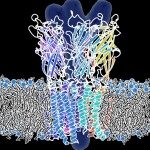Lien vers Pubmed [PMID] – 8743713
Lien vers HAL – Cliquez ici
Lien DOI – 10.1016/s0076-6879(96)66042-x
Methods Enzymol. 1996 266:662-80. Review.
This chapter discusses the methods used for extracting maximal structural information from a set of distantly related protein sequences that ultimately share only isolated weakly conserved regions (blocks). The extraction of structural insight from aligned sequences is an integrative process that attempts to make use of all the available information. The chapter describes empirical rules that have been successfully used in different cases. Fully automated computer programs are not available to achieve this goal, implying that human intervention, empirical choices, and approximations are frequently used in the process of sequence alignments and structure predictions. Protein evolutionary information implied by sequence alignments has proved useful in improving the accuracy of secondary and tertiary structure predictions, and these methods are under constant development, use, and evaluation. The translation of evolutionary information into structural insights is a major goal for future research in sequence analysis studies.

